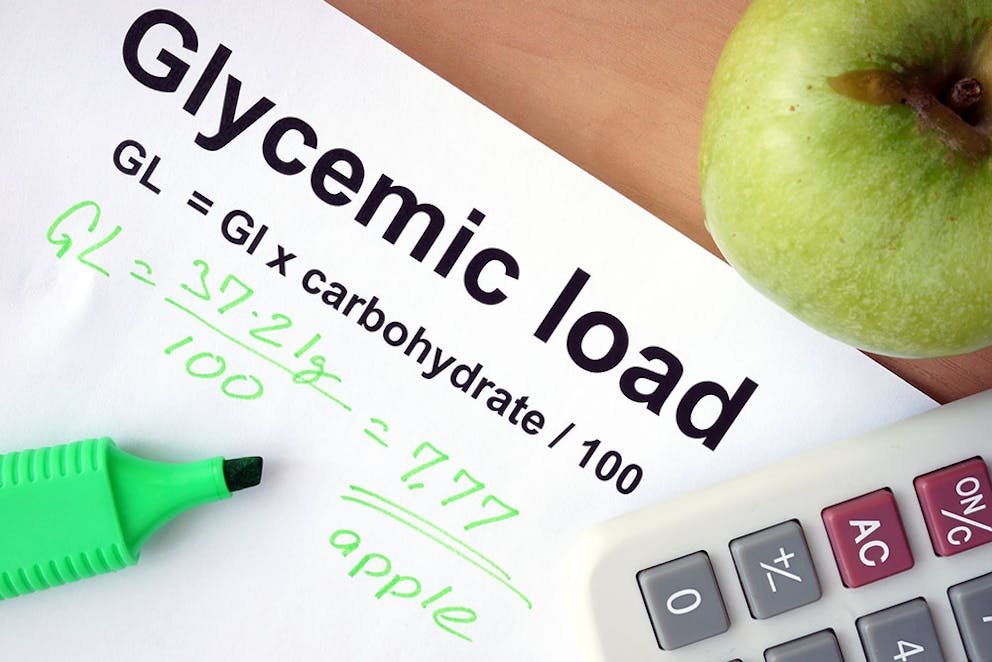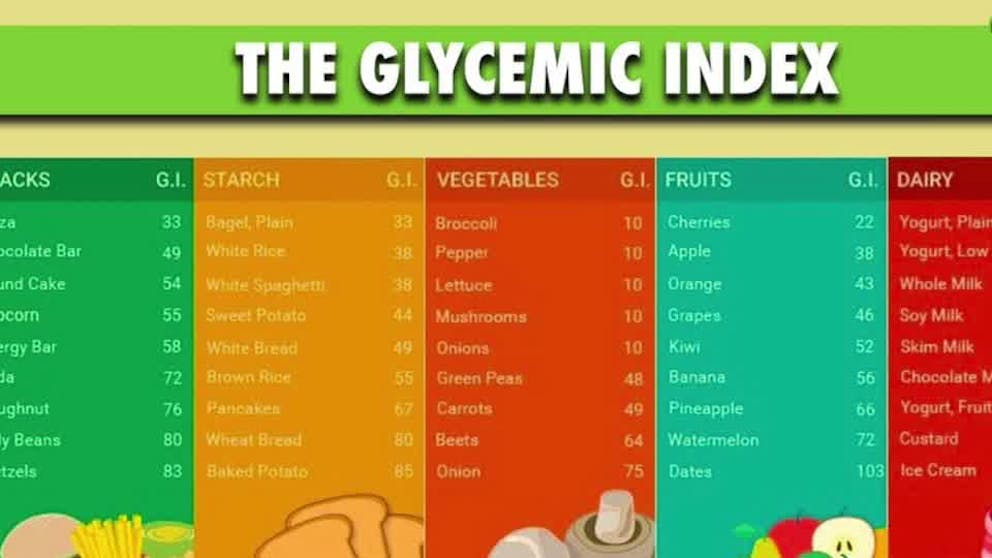Glycemic Index vs Glycemic Load in Simple Terms

4 Dangerous Ingredients to Avoid – Wallet Cutout Card
Identify harmful ingredients hidden in processed foods
Learn to recognize and identify these ingredients on food labels
Get a practical wallet cutout for quick reference while shopping or dining out

4 Dangerous Ingredients to Avoid – Wallet Cutout Card
Identify harmful ingredients hidden in processed foods
Learn to recognize and identify these ingredients on food labels
Get a practical wallet cutout for quick reference while shopping or dining out

4 Dangerous Ingredients to Avoid – Wallet Cutout Card
Identify harmful ingredients hidden in processed foods
Learn to recognize and identify these ingredients on food labels
Get a practical wallet cutout for quick reference while shopping or dining out

4 Dangerous Ingredients to Avoid – Wallet Cutout Card
Identify harmful ingredients hidden in processed foods
Learn to recognize and identify these ingredients on food labels
Get a practical wallet cutout for quick reference while shopping or dining out

4 Dangerous Ingredients to Avoid – Wallet Cutout Card
Identify harmful ingredients hidden in processed foods
Learn to recognize and identify these ingredients on food labels
Get a practical wallet cutout for quick reference while shopping or dining out

How to Read Your Body
Learn to recognize common symptoms and uncover their underlying health issues
Understand the signs of nutrient deficiencies to manage your health
Explore the four metabolic body types and the core factors that influence them
Interpret your body's signals from head to toe to identify potential health concerns

How to Read Your Body
Learn to recognize common symptoms and uncover their underlying health issues
Understand the signs of nutrient deficiencies to manage your health
Explore the four metabolic body types and the core factors that influence them
Interpret your body's signals from head to toe to identify potential health concerns

How to Read Your Body
Learn to recognize common symptoms and uncover their underlying health issues
Understand the signs of nutrient deficiencies to manage your health
Explore the four metabolic body types and the core factors that influence them
Interpret your body's signals from head to toe to identify potential health concerns

How to Read Your Body
Learn to recognize common symptoms and uncover their underlying health issues
Understand the signs of nutrient deficiencies to manage your health
Explore the four metabolic body types and the core factors that influence them
Interpret your body's signals from head to toe to identify potential health concerns

How to Read Your Body
Learn to recognize common symptoms and uncover their underlying health issues
Understand the signs of nutrient deficiencies to manage your health
Explore the four metabolic body types and the core factors that influence them
Interpret your body's signals from head to toe to identify potential health concerns
Glycemic index vs glycemic load: two nutritional terms that leave many scratching their heads.
When managing blood sugar levels it is important to learn about the glycemic index and glycemic load.
Understanding Glycemic Index
If you've ever wondered how different foods impact your blood sugar levels, then the glycemic index (GI) is worth exploring. The GI measures how fast a carbohydrate turns into sugar and affects blood sugar.
In essence, it's a ranking system for carbohydrates in food items. It shows how quickly each one can affect your glucose levels compared to pure glucose - which has an assigned value of 100 on this scale.
Ranking Foods Based On The Glycemic Index
Foods are ranked from low to high based on their GI values. For instance, those with scores below 55 are considered to have 'low' GIs; these typically include whole grains and vegetables that have minimal effect on our body's insulin response.
Moving up the ladder, we find foods with moderate GIs between 56 and 69. Think sweet potatoes or honey here.
These may cause slight spikes in blood sugars but nothing too alarming if consumed within reasonable limits.
Finally, at the top tier lie items scoring above 70, known as 'high' glycemia products like white bread or sugary drinks, which tend to increase rapidly upon consumption, leading to a higher risk of diabetes and other health issues over time.

Exploring Glycemic Load
The world of nutrition can be a maze, especially when understanding terms like glycemic load.
Defining the concept of Glycemic Load
Gone are the days when we only focused on how quickly carbs turned into sugar. Welcome to an era where concentration matters. In simple words, glycemic load is about considering both quality and quantity.
It's not just about how quickly the carbs turn into glucose, but also taking into account the amount of carbs in your food.
Digging Deeper Into The Science Of GL
A low glycemic load score would be between 0 and 10.
Moderate scores between 10 -20 suggest that these foods do have some influence over our blood sugar levels due to higher carb content or faster conversion rates - for example, whole wheat bread.
Scores above 20 indicate danger territory: These items will likely lead toward rapid spikes within our bloodstream, as seen with sugary drinks such as soda pop, which has a whopping value of around 30.
How does it differ from the Glycemic Index?
The critical difference lies in perspective. glycemic index looks at speed; glycemic load focuses on volume. In other words, while GI tells us 'how fast,' GL informs us 'how much.' Think watermelon: It has a high glycemic index (~72), suggesting its sugars get absorbed rapidly.
But here's the twist.
The typical serving size doesn't pack many carbohydrates overall, leading to a modest total amount getting converted, resulting in a lower glycemic load number (~8).
This shows why looking solely at GI might sometimes give misleading impressions about the impacts of certain foods on the body's response.
Comparing Food Items Based On GI And GL
It's essential to understand that the same food can rank differently on the glycemic index (GI) and glycemic load (GL). This difference is due to how these two measures assess a food item's impact on blood sugar levels.
Glycemia values for standard food items like potatoes and corn
To illustrate, let's consider an example: Cornbread. Cornbread has a moderate glycemic index of 69, but its glycemic load soars at 25.5, making it high in glycemic load.
The deceptive nature of relying solely on GI or GL
Depending only on one measure could lead you astray when trying to maintain stable blood glucose levels.
A prime example would be watermelon; despite having a high glycemic index value of around 76, it falls into the low category regarding its glycemic load score, which is just about five.
In contrast, while oats may have a lower glycemic index, standing at approximately fifty-five, they carry a significant amount - thirteen points precisely - under the glycemic load measurement method.
Thus, it potentially causes a more substantial increase in your body's sugar content after consumption compared to what might initially seem based upon first glance using a single metric approach instead of both simultaneously.
We must consider how quickly carbs convert into sugars (GI) and how much carbohydrate there is in each serving size(GL).
High intake on either the glycemic load or index often leads directly to negative impacts such health conditions including obesity, diabetes, and heart disease, among others
Importance Of Considering Both GI And GL In Diet Planning
Considering the glycemic index (GI) and glycemic load (GL) of your food choices is essential in achieving healthier eating habits.
The Impact Of High GI/GL Foods On Health:
Foods with high glycemic indices or loads can cause rapid spikes in blood sugar levels. This roller coaster effect isn't just harmful to those managing diabetes; it also contributes to energy crashes and cravings that could lead to overeating.
In contrast, foods low in these metrics have less impact on blood glucose levels, providing more sustained energy throughout the day.
Better Blood Sugar Control: A diet rich in low-GI foods helps maintain steady blood sugar levels, reducing the risk of type 2 diabetes and heart disease.
Satiety & Weight Management: Low-to-moderate GI/GL diets keep us feeling fuller longer, aiding weight management efforts.
Elevated Energy Levels: No sudden peaks or troughs mean a consistent energy supply, keeping fatigue at bay.

Fries vs. Chips and Glycemic Index
Fries and chips differ in preparation and taste. Fries are typically deep-fried potato strips, while chips are thinly sliced and can be made from various sources. Regarding glycemic index, deep-fried fries tend to have a higher value than baked or air-dried chips.
However, portion size and overall dietary composition also impact blood sugar levels. Choosing nutrient-rich options and moderating consumption is essential for a proper diet.
Conclusion
Understanding both the glycemic index (GI) and glycemic load (GL) is key for making informed dietary choices.
While the GI measures the speed of carbohydrate conversion to sugar, the GL considers both quality and quantity.
By opting for low-GI and low-GL foods, individuals can better manage blood sugar levels and support overall health.

Popular
08/21/2024
53.6K views
02/23/2025
45.4K views
11/18/2024
270.1K views
03/18/2024
11/21/2022




